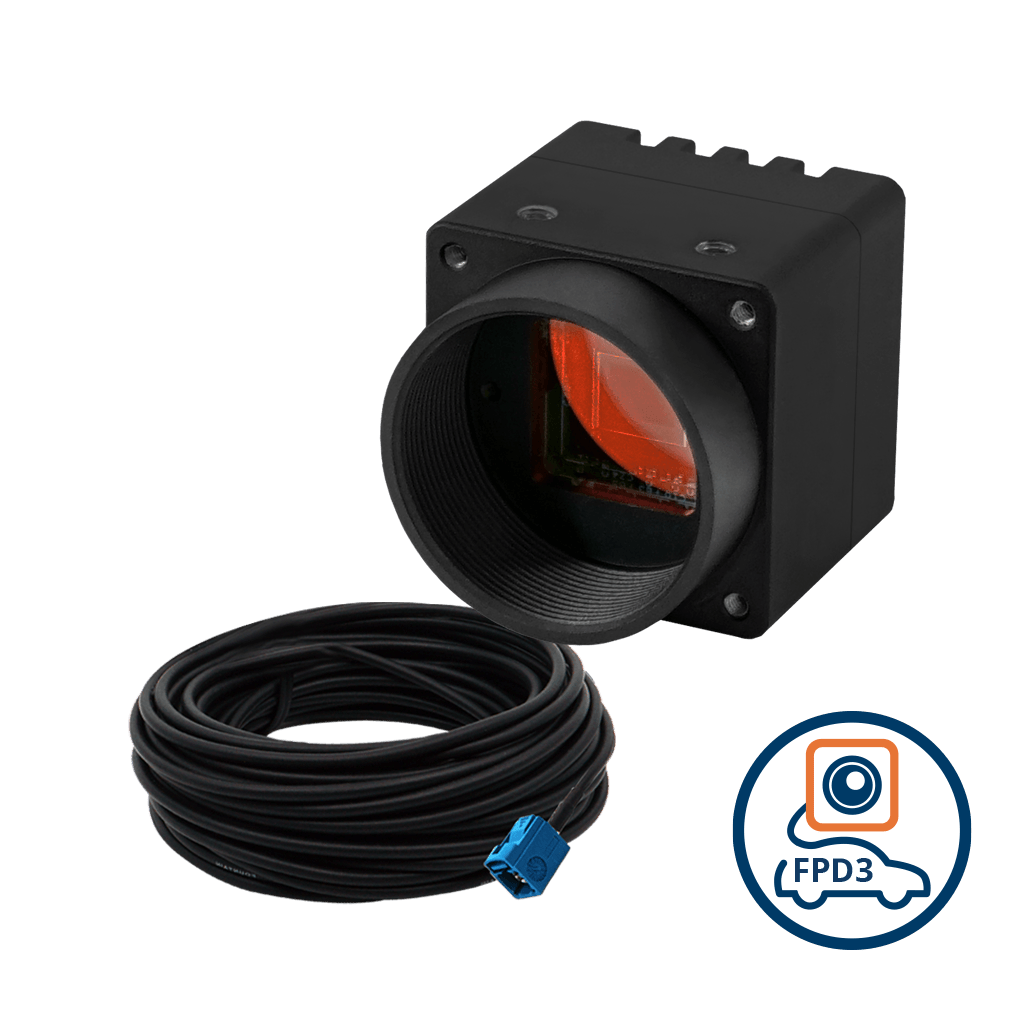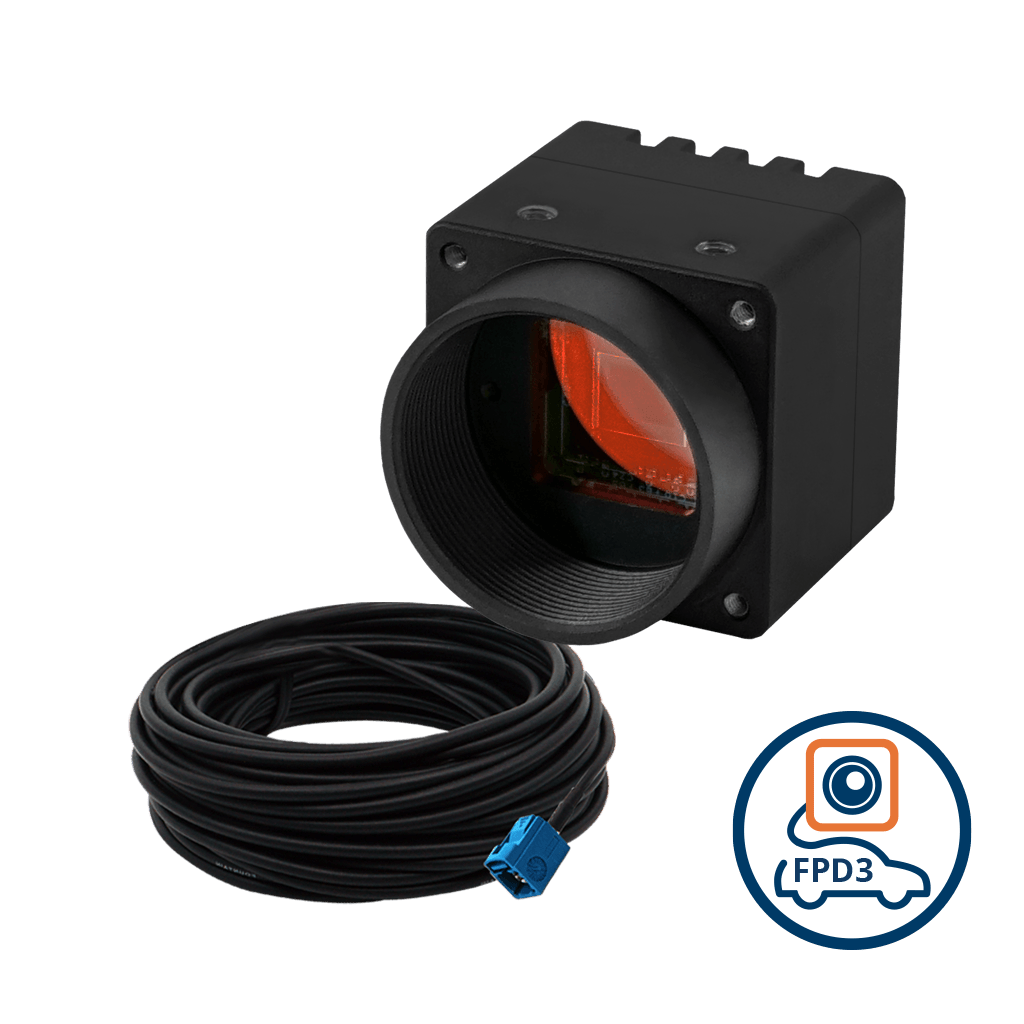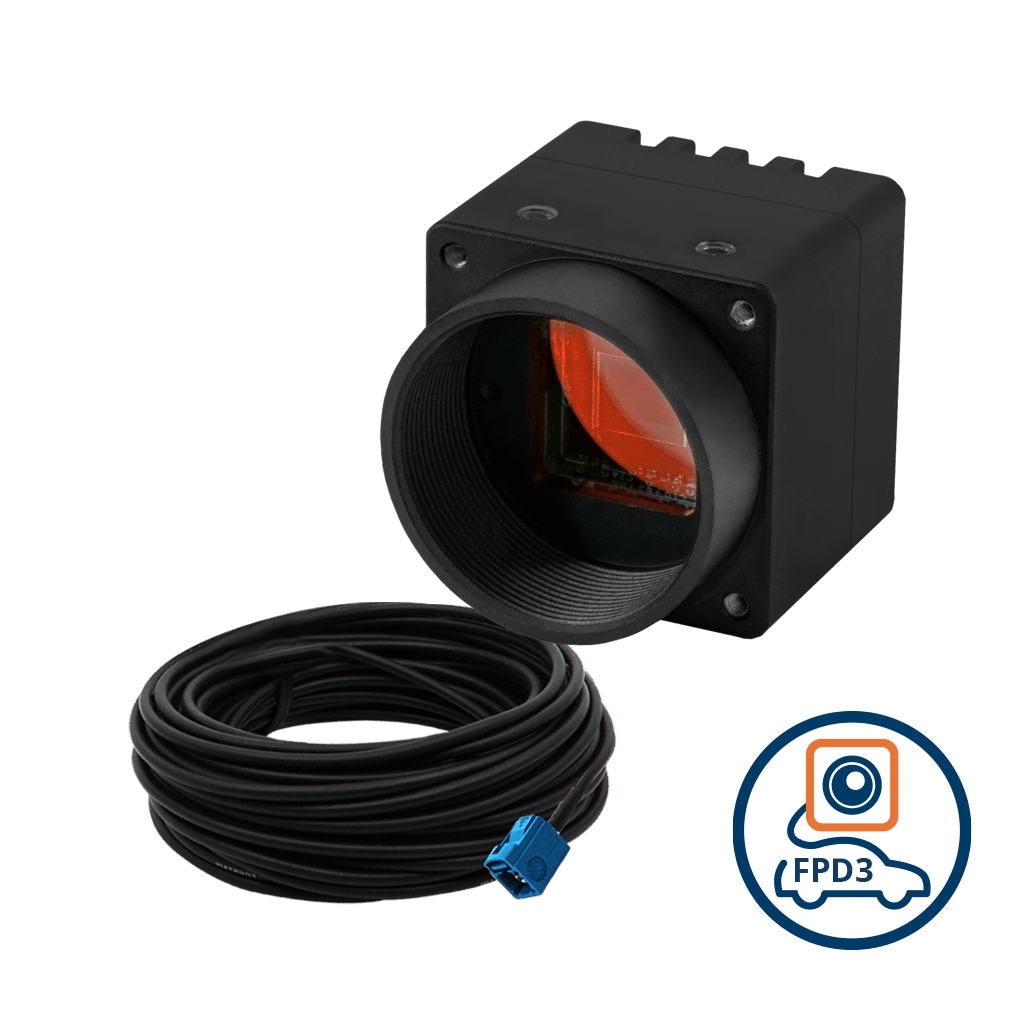The utilization of advanced technology in agriculture is revolutionizing modern farming practices. Autonomous tractors, drones, big data analytics, and IoT devices are being deployed to address the challenges faced by farmers today. A key component of this technological shift is the introduction of robotic vision systems. Equipped with high-tech cameras and cutting-edge image processing algorithms, these systems enhance the performance of farming equipment by enabling them to carry out tasks with exceptional accuracy and efficiency. Cameras play a vital role in this transformation as they act as the eyes of farm machinery, facilitating field navigation, crop health monitoring, and precise identification and management of weeds or pests.
Farmers can now benefit from integrating cameras and robotic vision into their equipment. This technology goes beyond automating routine tasks; it enhances the intelligence of these systems to make data-driven decisions. Farmers can optimize resources, reduce waste, and increase yields by providing real-time visual information about crops and soil conditions. This aligns with the goal of precision farming – to make agriculture more sustainable, productive, and efficient by customizing farming practices for each plant and plot of land.
What is precision farming?
Precision farming, also called precision agriculture, is a modern farming approach that utilizes technology and various tools such as GPS guidance, control systems, sensors, robots, drones, self-driving vehicles, variable rate technology, and software to enhance field management in crop production. The main objectives of precision farming are to maximize profitability while promoting sustainability and protecting the environment. It involves making accurate and informed decisions about all aspects of agricultural practices.
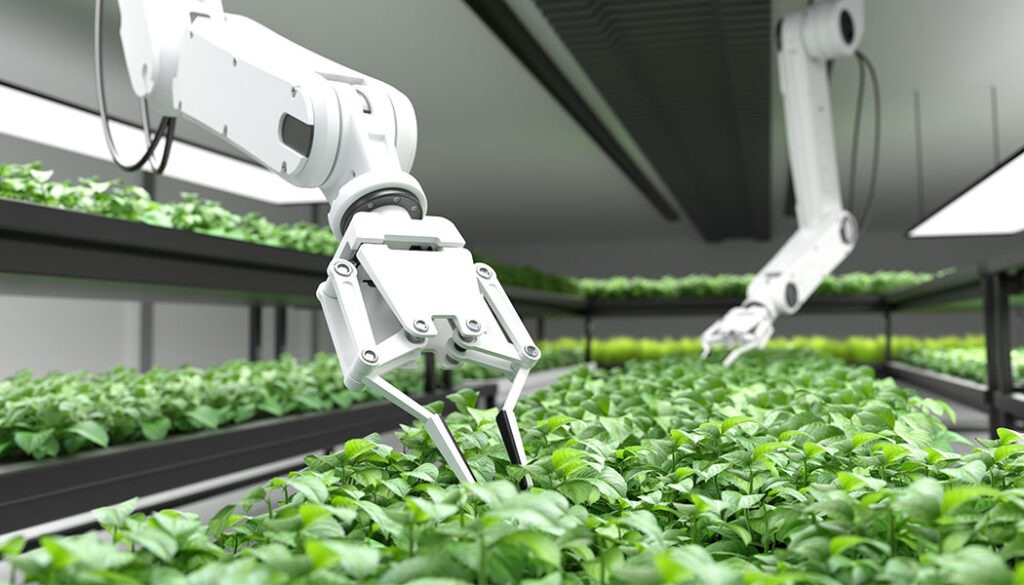
Advantages of Precision Farming
- Improving productivity and efficiency: Precision farming optimizes using water, fertilizers, and pesticides to boost crop yields and enhance quality. This focused approach prevents wastage of resources, resulting in a more efficient agricultural process.
- Cost savings: Precision agriculture cuts down on input requirements such as chemicals and water, reducing farmers’ expenses. By strategically applying inputs only where and when necessary, costs are minimized without compromising productivity.
- Promoting environmental sustainability: The practice of reducing water, fertilizer, and pesticide usage reduces chemical runoff and leaching into water sources, safeguarding ecosystems and mitigating pollution.
- Data-driven decisions: Data-driven decision-making is a key aspect of precision farming, utilizing advanced technologies to gather data on crop and soil conditions allows farmers to make informed decisions that are tailored to the unique needs of each section of their field, which leads to improved crop health and higher yield.
- Efficient resource utilization: Precision farming technologies optimize the allocation of resources by applying precise amounts of inputs at the appropriate time and location. Which not only saves resources but also guarantees optimal growth conditions for crops.
- Boosted profits: By saving on input costs and boosting efficiency and productivity, farmers can witness a surge in their profit margins. Precision farming enables higher yields with minimal investment, enhancing the financial sustainability of farming activities.
- Advanced surveillance: Cutting-edge technologies like drones and satellites empower farmers to oversee their crops and respond promptly in real time. This heightened level of supervision and control aids in the early detection and resolution of issues, resulting in healthier crops and minimized losses.
- Flexibility in tackling obstacles: Precision farming equips farmers with the tools to effectively navigate climate change and water scarcity. Farmers can ensure the continuity of their operations amidst environmental challenges through judicious use of resources and optimization of crop management techniques.
Why are embedded cameras needed in precision farming?
Embedded cameras are essential in precision farming, enabling farmers to monitor, analyze, and automate agricultural processes with visual data. The incorporation of camera technology into farming machinery and drones has transformed how farmers oversee their crops, soil, and resources. The significance of capturing images lies in its role in automation for precision farming:
Health monitoring
Embedded cameras can capture detailed images of crops for assessing their health status. By detecting subtle color variations and patterns that are not visible to the human eye, these cameras aid in the early identification of diseases, nutrient deficiencies, or water stress. This early detection allows for prompt intervention to prevent extensive crop damage.
Weed identification and control
A key application of embedded cameras in precision farming is identifying and mapping weeds. Cameras mounted on drones or tractors can capture processed field images, which are then analyzed by AI and ML-based algorithms to differentiate between crops and weeds. This information targets weeds with herbicides or mechanical methods, reducing chemical usage while safeguarding the crops from weed infestations.
Yield estimation
Camera modules can take detailed images of crops during their growth stages, enabling accurate yield estimation. This data is crucial for effectively planning crops’ harvest, storage, and sale, leading to improved market readiness and financial management.
Precision irrigation
Employing specialized cameras that can detect infrared wavelengths, farmers can assess water stress levels in different parts of a field. By analyzing these images for signs of drought stress, precise irrigation methods can be implemented to optimize water usage and promote crop health. The NIR sensitivity of embedded cameras also helps to calculate NDVI (Normalized Difference Vegetation Index) for measuring crop health and density.
Fruit picking and harvesting automation
Embedded cameras are key in automating harvesting for fruits and other selectively picked crops. By identifying the ripeness of produce based on color and size, these cameras enable automated fruit picking at the optimal time without requiring manual labor.
Plant counting and spacing analysis
Utilizing advanced cameras, precise plant counting and spacing analysis can be conducted to evaluate planting effectiveness, forecast yields, and strategize reseeding or thinning actions for optimal growth conditions.
Data for Machine Learning models
The data derived from images taken by embedded cameras offers a valuable dataset for training machine learning models. These models can automate anomaly detection and yield prediction and recommend precision farming techniques to boost agricultural efficiency and productivity.
Navigation and Guidance
Embedded vision systems are used by autonomous robotic systems in precision agriculture as an aid for its guidance and navigation. By using cameras, robotic systems can use key features in cameras fields of view to understand their location and direction heading much more precisely than using GNSS guidance alone.
Types of robotic vision systems used in precision farming
Robotic vision systems have been pivotal in enhancing precision farming practices. Embedded cameras are the heart of these systems, where they help different types of robots capture images and videos to improve productivity and yield. Here, let us look at the different robotic vision systems used in agriculture.
- Unmanned Aerial Vehicles (UAVs), also known as Drones, are extensively utilized for aerial surveys, mapping, and monitoring in agriculture. They swiftly capture high-resolution images and data over large areas to assess plant health and irrigation needs and detect pests and weeds. Drones can also efficiently spray pesticides and fertilizers in targeted areas, reducing chemical usage.
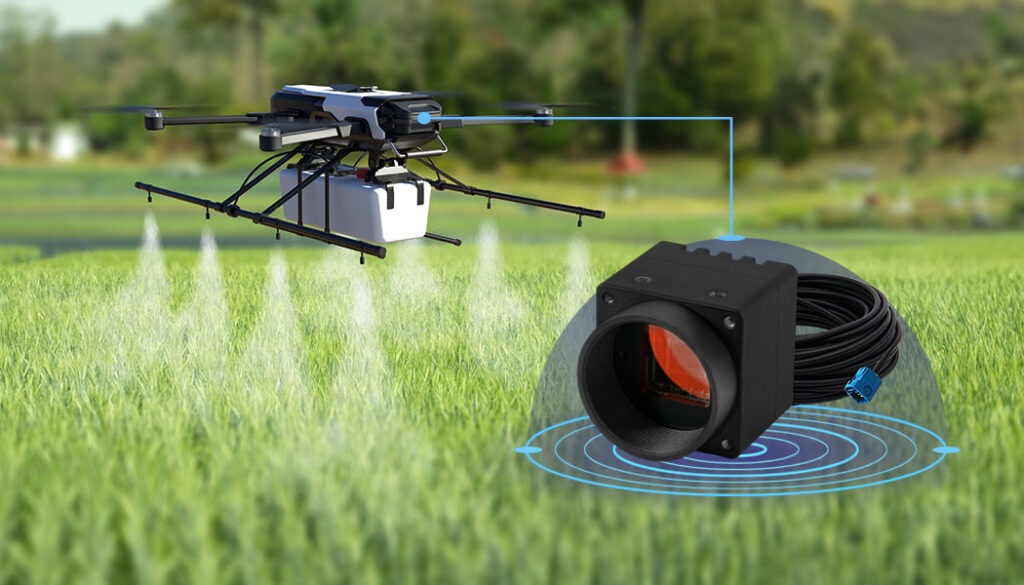
A drone used for precision farming
- Autonomous tractors equipped with GPS and embedded cameras can autonomously perform tasks like plowing, planting, and harvesting with minimal human intervention. These tractors enhance efficiency and precision while reducing labor costs and errors.
- Weeding robots utilize vision systems and AI to distinguish crops and weeds accurately. They can target weeds precisely for mechanical removal or direct application of herbicides, leading to reduced chemical usage and enhanced crop protection.
- Automated planting robots utilize cutting-edge 2D and 3D camera technologies to plant seeds in fields, ensuring optimal growth precisely. These robots can also analyze soil conditions to select the best seeds for improved plant distribution and yield.
- Harvesting robots are equipped with advanced vision systems to identify and harvest ripe produce efficiently, reducing the need for manual labor while enhancing productivity.
- Ground-based crop monitoring and scouting robots gather essential data on plant health, soil quality, and field environmental conditions. By detecting issues like nutrient deficiencies and diseases early on, these robots enable timely interventions for improved crop management.
- Robots specializing in phenotyping play a crucial role in research and breeding initiatives by meticulously gathering data on plant attributes. This data is instrumental in pinpointing characteristics like drought tolerance and productivity, facilitating the creation of robust crop varieties.
- Livestock management robots are integral to precision farming practices, taking charge of feeding, milking, and overseeing the well-being and behavior of animals. These robots enhance operational efficiency and promote animal welfare by delivering uniform and accurate care.
The evolution of embedded vision in precision farming
Cameras were not widely used in agriculture during the early stages due to technological limitations. The low-quality cameras at that time had limited capabilities and could only capture basic images, especially from a distance or at high speeds. This prevented them from being used for precision farming tasks that required detailed analysis. Additionally, these early systems’ processing power and storage capacity were limited, which hindered their ability to capture and analyze large amounts of data in real time.
The introduction of high-definition sensors revolutionized the use of embedded vision in precision agriculture. These advanced sensors enabled the capture of highly detailed images, facilitating the detection of subtle differences in plant health, accurate weed identification, and thorough monitoring of crop growth stages. The improved imaging capabilities made it possible to spot problems early on, leading to more targeted interventions and reducing reliance on broad-spectrum solutions. With the emergence of high-speed processors and efficient interfaces, real-time processing and analysis of large amounts of image data became feasible.
This development allowed swift data processing from high-resolution sensors, enabling immediate decision-making and action. For instance, embedded vision systems on drones or agricultural machinery could pinpoint weeds or areas with crop stress while traversing a field, applying treatments precisely where needed. Incorporating artificial intelligence and machine learning into embedded vision systems has further bolstered their functionalities. These technologies facilitate examining intricate data patterns and identifying specific plant diseases, nutrient deficiencies, and optimal harvest timings.
Embedded vision technology has significantly impacted precision farming by enabling: –
- In-depth monitoring and analysis: Farmers can now closely observe and analyze crop health, soil conditions, and environmental factors with unparalleled precision and accuracy.
- Targeted solutions: The ability to pinpoint issues accurately allows for specific interventions, leading to a reduction in the usage of water, fertilizers, and pesticides while enhancing efficiency.
- Automation: Using high-quality imaging facilitates the automation of various tasks like planting, weeding, and harvesting, thereby decreasing labor costs and boosting productivity.
- Data-driven decision-making: The abundance of data produced by embedded vision systems supports more informed decision-making processes that improve the sustainability and profitability of farming operations.
Wrapping up
TechNexion’s embedded vision cameras come equipped with high-quality image sensors that capture clear and detailed images. This high-resolution imaging is essential for effectively monitoring various agricultural aspects like crop health, pest identification, and soil conditions. Some of the other features that make TechNexion’s embedded camera solutions a perfect fit for agricultural robots include:
- Near Infrared optimization
- Global shutter
- High dynamic range
- High frame rate
- Compatibility with USB, MIPI, and FPD-Link III interfaces
- Compact design
Understanding the diverse requirements of different farming operations, TechNexion provides extensive customization options for its camera systems. Whether it involves adjusting the lens for specific monitoring needs, offering IP68 enclosures for added protection, or assisting with complete system design, TechNexion is committed to meeting the unique demands of the agricultural sector. Learn more about embedded vision solutions here.
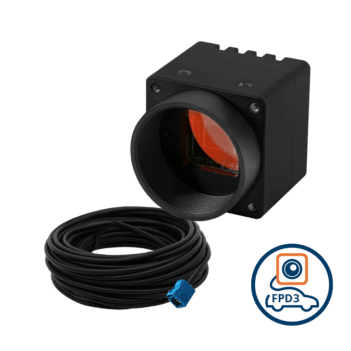
FPD-Link III Aluminium Enclosed Camera with onsemi AR0234 2MP Full-HD Global Shutter with Onboard ISP + IR-Cut Filter with C Mount Body
VLS-FPD3-AR0234-CB
- onsemi AR0234 2.3MP Global Shutter Sensor
- C-Mount for Interchangeable Lenses
- FAKRA Z-Code Automotive Connector
- Plug & Play with Linux OS & Yocto
- VizionViewer™ configuration utility
- VizionSDK for custom development

